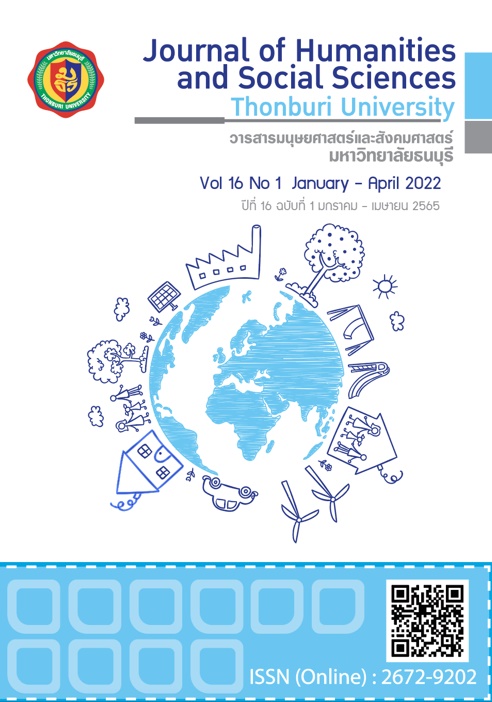Value Chain and Market Opportunity of Thai’s Coffee Products to Enhance the Marketability Competitiveness among the ASEAN Countries
Keywords:
Coffee industry, Coffee products, Supply chain, Logistics managementAbstract
The research project of supply chain and market opportunity of Thai's coffee products is to enhance the market competitiveness among the ASEAN Countries. The main objectives are to study and analyze market development and the supply chain of coffee and coffee products in the highland districts in the upper north of Thailand. The results of the supply chain analysis found that Arabica coffee is the majority coffee species grown in the upper north of Thailand, which is the most plantation located in Chiang Rai. They can process into two dried coffee products such as coffee extract and roasted coffee products. The produced products supply for domestic consumption and international export. The logistics system analysis shows that the supply chain is consists of three parts, upstream (agriculturist or coffee farmer), mid-stream (coffee processing manufacturer), and downstream (food and drink industry including export). These three parts have systematic connectivity. On top of that, this study analyzes weaknesses, strengths, opportunities, and threats (SWOT Analysis) and found that Thai coffee received an interest in the market. However, the aggressive market competition such as Vietnam coffee, which is cheaper than Thai coffee. Therefore, it is important to know our strengths and weaknesses, which will be used for gaining the market opportunity.
References
กรมส่งเสริมการค้าระหว่างประเทศ. (2558). การแข่งขันของธุรกิจกาแฟในญี่ปุ่น. สืบค้นเมื่อ 1 มกราคม 2559, จาก www.ditp.go.th/contents_attach/143271/143271.pdf
กรมส่งเสริมอุตสาหกรรม. (2559). การวิเคราะห์จุดแข็งจุดอ่อนโอกาสและอุปสรรค (SWOT Analysis) รายอุตสาหกรรม. สืบค้นเมื่อ 11 กันยายน 2559. จาก http://www.dip.go.th/
เกษตรกรผู้ปลูกกาแฟใน จังหวัดเชียงราย. ผู้จัดการสหกรณ์การเกษตรดอยสะเก็ด จังหวัดเชียงใหม่ และผู้จัดการบริษัทกาแฟดอยช้างคอฟฟี่ฟาร์ม จังหวัดเชียงราย. (มกราคม – กุมภาพันธ์ 2559). สัมภาษณ์.
ทวีศักดิ์ เทพพิทักษ์. (2552). การจัดการโลจิสติกส์และซัพพลายเชน. กรุงเทพฯ: เอ็กซเปอร์เน็ท
ไทย-เออีซีดอทคอม. (2559). ผลกระทบแรงงานไทยจะเป็นอย่างไรเมื่อเข้าสู่ AEC ประชาคมเศรษฐกิจอาเซียน. สืบค้นเมื่อ 10 ตุลาคม 2559. จาก http:// www.thai-aec.com
ธนาคารเพื่อการส่งออกและนำเข้าแห่งประเทศไทย. (2558). เศรษฐกิจไทยยกระดับสู่เศรษฐกิจมูลค่าเพิ่มพร้อมรับโอกาสทองจาก AEC. รายงานประจำปี 2558. สืบค้นเมื่อ 11 กันยายน 2559, จาก www.exim.go. th/getattachment/Annual-Reports
วิทยา สุหฤทดำรง. (2545). การจัดการโซ่อุปทาน. กรุงเทพฯ: เพียร์สัน เอ็ดดูเคชั่น
สำนักงานเศรษฐกิจการเกษตร. (2559). สถิติการส่งออกกาแฟดิบยังไม่คั่ว: ปริมาณและมูลค่าการส่งออกรายเดือน. สืบค้นเมื่อ 11 กันยายน 2559, จาก www.oae.go.th/oae_report/php2pdf
สำนักงานสถิติจังหวัดเชียงราย. (2564). พื้นที่เพาะปลูกและเนื้อที่ให้ผลผลิตกาแฟของไทย. สืบค้นเมื่อ 13 กรกฎาคม 2564. จาก https://www.oae.go.th
อวยพร เพชรหลายสี. (2550). แนวทางการพัฒนาการผลิตกาแฟอาราบิก้า. สืบค้นเมื่อ 17 ตุลาคม 2559. จากhttp://oae. go.th/ewt_news.php?nid=554&filemame=index
เอกกมล ภู่น้อย. (2551). ความเป็นมาของกาแฟในประเทศไทย. สืบค้นเมื่อ 11 กันยายน 2559, จาก http//student.nu. ac.th/phung/coffee2.html
เอฟเค ท็อค เจาะประเด็นการเกษตร. (2555). ภาพรวมของเมล็ดกาแฟไทย ภายใต้กรอบประชาคมเศรษฐกิจ (AEC). สืบค้นเมื่อ 9 ตุลาคม 2559. จาก http://m.farmkaset/content_details.aspxMCon_id=1231
Council of Supply Chain Management Professional. (2013). Supply Chain Management Terms and Glossary. Illinois, United States. Retrieved September 13, 2016, from https://cscmp.org
Food and Agriculture Organization of The United Nations (FAO). (2020). The State of Food and Agriculture, Rome, Italy. Retrieved September 11, 2016, from www.fao.org/documents
Lambert, D. M., Cooper, M. C., & Pagh, J. D. (1998). Supply chain management: implementation issues and research opportunities. The international journal of logistics management. 9(2): 1-20.
Rueda, X., & Lambin, E. F. (2013). Linking globalization to local land uses: how eco-consumers and gourmands are changing the Colombian coffee landscapes. World Development. 41: 286-301.
United States Department of Agriculture. (2016). Coffee: World Markets and Trade. Retrieved October 11, 2016, from http://usda.01.library.cornell.edu
Translated Thai References
Auyphon P. (2007). Arabica Coffee Production Improvement Guidance. Retrieved October 17, 2016, from http://oae.go.th/ewt_news.php?nid=554&filemame=index (in Thai)
Chiang Rai Statistical Office. (2564). Coffee plantation area of Chiang rai province. Retrieved July 13, 2021, from https://www.oae.go.th (in Thai)
Chiang Rai's coffee farmers. Doisaket agricultural cooperative’s manager, Chiang Mai, and Doi Chaang Coffee Farm’s manager, Chiang Rai. (January - Febuary 2016). Interviews. (in Thai)
Department Of Industry Promotion. (2016). Industry SWOT Analysis. Retrieved September 11, 2016, from Retrieved September 11, 2016, from http://www.dip.go.th (in Thai)
Department of International Trade Promotion. (2015). Competition of Coffee Business in the Japan. Retrieved January 1, 2016, from www.ditp.go.th/contents_attach/143271/143271.pdf (in Thai)
Export-Import Bank of Thailand. (2015). Thai economy: Toward a value-creation economy to emvrace AEC golden opportunity. Annual report 2015. Retrieved September 11, 2016, from www.exim.go.th/getattachment/ Annual-Reports (in Thai)
FK Talk Agricultural Focus. (2012). Overview of Thai Coffee Bean under AEC. Bangkok, Thailand Retrieved October 9, 2016, from http://m.farmkaset/content_details.aspxMCon_id=1231 (in Thai)
Office of Agricultural Economics with Thai Customs Collaboration. (2016). The Statistic of the un-roasted Coffee Bean: Monthly Export quantity and Value of Chiang rai Province. Retrieved September 11, 2016, from www.oae.go.th/oae_report/php2pdf (in Thai)
Phunoi, Akkamon. (2008). History of Coffee in Thailand. Retrieved September 11, 2016, from http//student. nu.ac.th/phung/coffee2.html. (in Thai)
Suharitdamrong, Vithaya. (2002). Supply Chain Management. Bangkok: Pearson Educdtion. (in Thai)
Thai-aec.com. (2016). Impact of AEC on Thai Labor. Retrieved October 10, 2016, from http://www.thai-aec.com (in Thai)
Theppitak, Taweesak (2009). Logistics and Supply Chain Management. Bangkok: ExpernetBooks. (in Thai)







